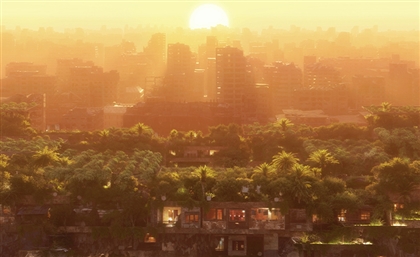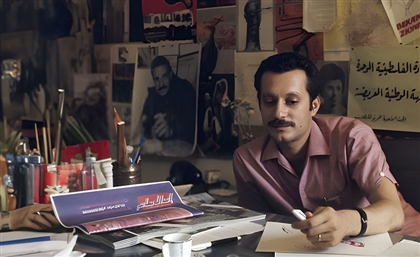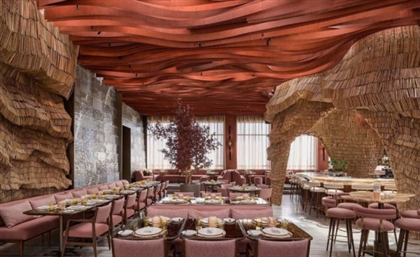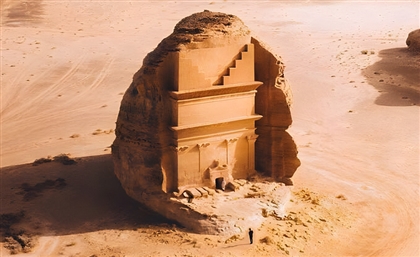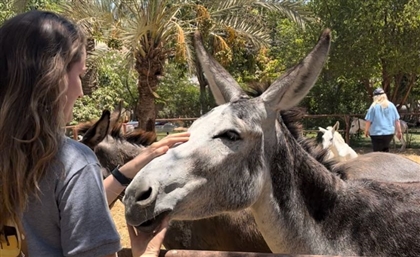How Manuel Alvarez Captures the Disruptive Beauty of Brutalist Cairo
Manuel Alvarez’s photography transforms Cairo’s brutalist buildings into a stunning narrative of urban resilience.

Journeying through the streets of Cairo is like stepping into a dynamic, ever-changing kaleidoscope, where towering structures gaze over the frenetic traffic and unpredictable dance of pedestrians. Amidst the overwhelming cacophony of the streets, it's easy to miss what’s right in front of you. Much like the city itself, Cairene architecture is a bold, often brutal delight - one you can only truly appreciate when you take a moment to pause, look up, and let the layers of the city reveal themselves.

Through his lens, Spanish photographer Manuel Alvarez unveils the unexpected charm of Cairo's dense urban fabric in his portrayal of Brutalist architecture. Through poetic compositions, he reimagines the towering housing blocks of Shubra Al Khaymah and El Warak nestled along the Nile’s edge, transforming the mundane into a disruptive visual narrative.
In this SceneHome interview, Alvarez recounts his experience in Cairo, sharing his thoughts and feelings about the city and its unwavering essence - a dynamic blend of resilience and beauty etched into its brutalist skyline.
Your photography is steeped in the urban fabric of Cairo - a city you seem to see with a uniquely layered lens. What first drew you to photography, and why has Cairo become such an essential subject in your work? How does it stand apart from other cities you’ve captured?
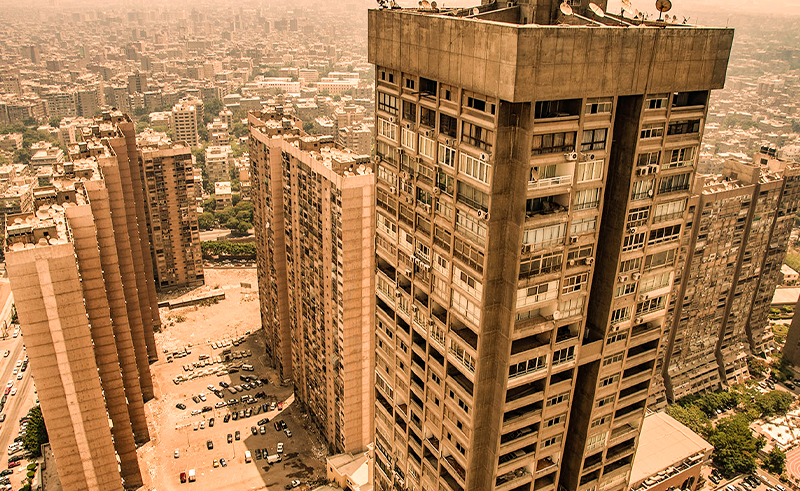
I’m originally from Santander, Spain, but from an early age, I became a traveller. At 18, I moved to Los Angeles, then studied art history in Boston. After that, I lived in San Francisco, New York, Paris and the Middle East - Beirut, Algiers and Cairo, where I spent four years.
Photography naturally became a part of this nomadic lifestyle. Constantly moving, absorbing new cities and landscapes, I felt the need to document what I saw, and the camera instinctively became the tool to capture fleeting moments - intimate yet universal.
Cairo? Cairo is something else entirely. It’s unlike any other city I’ve experienced. I always tell people to visit Mokattam, to stand on the cliffs and look out over the city. From that vantage point, you see the entire arc of humanity’s architectural history in one sweeping panorama. To the west, you have Saqqara and the Giza pyramids, those ancient first steps of civilization. Shift your gaze slightly, and there’s Fustat, the birthplace of Islamic Cairo. Keep moving, and you see the dense fabric of the mediaeval city, the domes and minarets blending into the sprawling City of the Dead. Then you reach the 19th-century European-influenced downtown, the eclectic facades and boulevards, and finally, the skyscrapers of Zamalek and the newer developments pushing out into the desert.
Cairo is a city where the past and the present collide in such profound ways - it’s a place that refuses to be pinned down, and that’s endlessly inspiring.
DEFINING BEAUTY IN THE BRUTALIST ARCHITECTURE OF CAIRO
Beyond Cairo’s architectural timeline - its grand narrative of humanity and its built environment - your work on brutalist architecture in the city feels deeply personal, almost reverential. What about these structures, particularly within the Cairo context, resonated with you? Was there something specific that drew you in when photographing these moments, especially in your exploration of "Brutalist Cairo"?
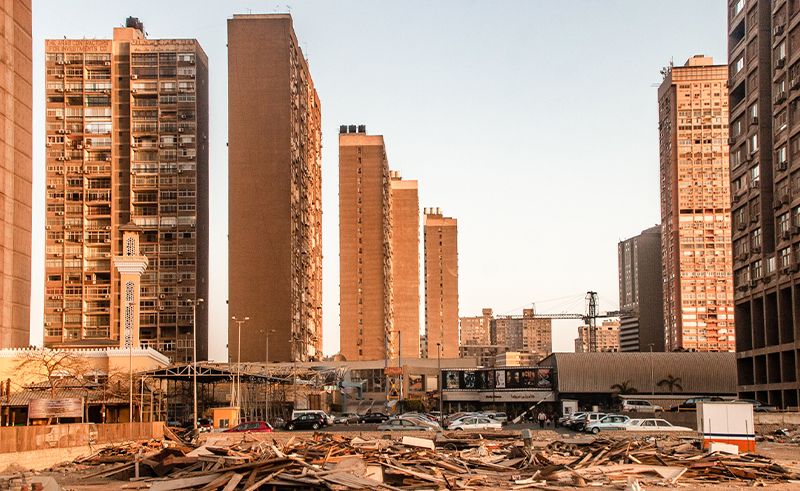
Cairo already has an overwhelming personality - it’s layered with centuries of architectural styles, from Islamic domes to French-inspired facades downtown. But then, in unexpected corners like Shubra Al Khaymah or along the Corniche facing Al-Warak, I stumbled upon these brutalist forms. They were striking in their contrast, yet they somehow felt entirely at home in the city’s chaotic tapestry.
What fascinates me about brutalist architecture is its raw honesty - an unapologetic embrace of concrete, bold and direct. It’s an evolution of rational architecture, stripped to its essentials, yet powerfully expressive. That ethos laid the foundation for an international movement.
Photographing these buildings, often with the Nile just behind me, was surreal. That juxtaposition - the brutalist lines against the backdrop of the river - captured something extraordinary. Cairo is the “Mother of All Cities,” and yet here it was, quietly embracing this international movement, reshaping it within its own vibrant context. For me, it was like unearthing a forgotten chapter in a story I thought I already knew.
How did you perceive the connection between these brutalist buildings and their urban context - specifically, the physical relationship they hold with the city’s landscape and everyday life?
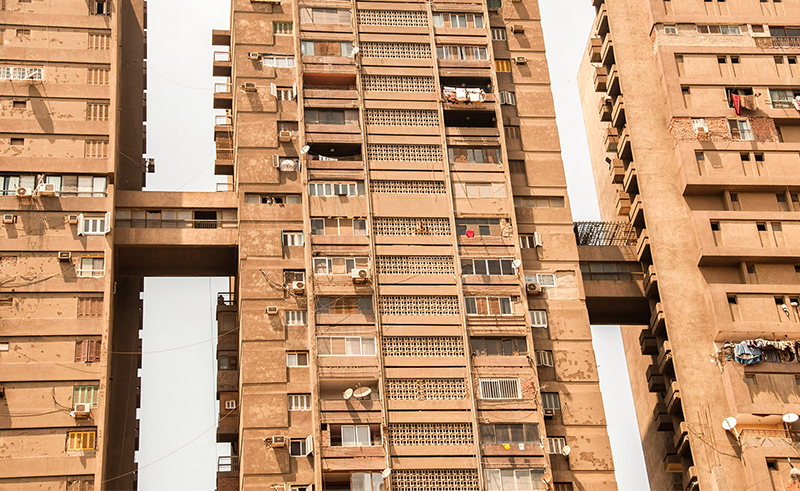
Well, you know, there’s something I kept coming back to when photographing these brutalist buildings in Cairo: verticality. It’s not a new concept for the city. High-rise structures have been a part of Cairo’s landscape for centuries. In fact, the pyramids were among the tallest man-made structures in the world for a long time. So the idea of reaching upward with architecture has always been ingrained in the city’s spirit.
The brutalist buildings I focused on, though, felt different. They are a necessity here, given Cairo’s density and its demographic challenges. beyond their form, there’s a connection between the buildings and the city’s landscape that struck me.
The concrete used in these buildings, the rough, textured surfaces and muted tones, seemed to echo the desert terrain surrounding Cairo. It felt like the architecture itself was a mirror of the city’s arid climate and rugged geography. There’s an almost poetic harmony between the colour of the concrete and the relentless sunlight beating down on the city’s streets and alleyways.
Without showing people, you imply their presence through subtle details. How does this absence shape your narrative, and how do you approach the tension between presence and absence in your photography?
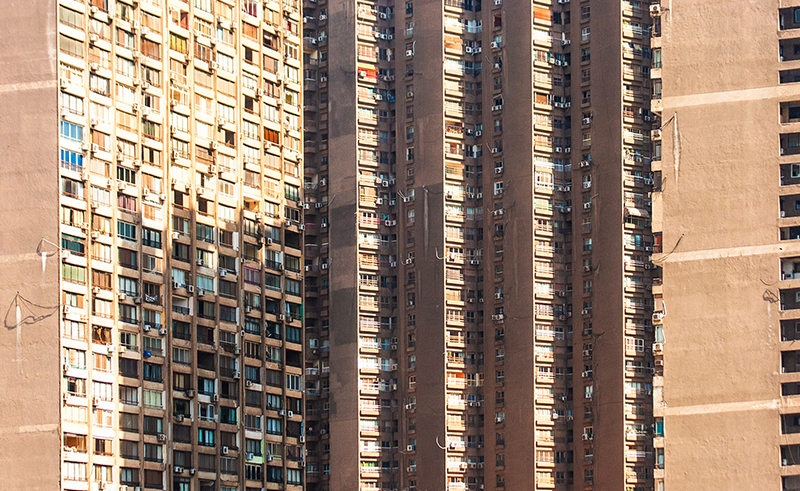
I believe that the best way to evoke human presence in architecture is by omitting it. These brutalist buildings, after all, were designed and built by people. They don’t just appear from nowhere - they’re the result of human labour, and people live inside them. But I find it beautiful to leave the people out of the frame, to capture only hints of them. You might catch a glimpse of an Egyptian flag fluttering from a window or a piece of clothing hanging, but the human figure itself remains absent.
I think it’s this absence that allows the structures to speak more powerfully about the human experience. If I were to show people on balconies, the building would lose some of its cultural mystique, its enigmatic quality. The human presence becomes a distraction from the dialogue I’m trying to create between the architecture and the environment. I prefer to let the buildings stand on their own, telling stories without the need for direct human representation.
You’ve highlighted the paradox in Cairo, where imposing buildings contrast with the daily lives of its people. Does your photography seek to document this reality, or does it aim to create new narratives for these places?
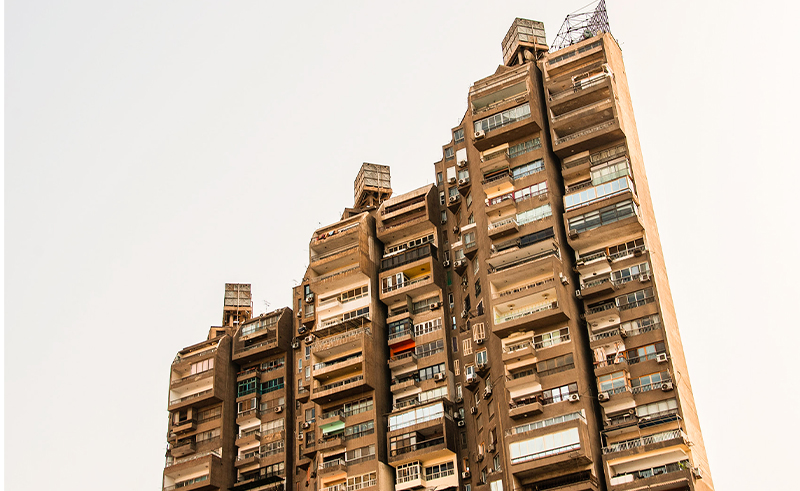
The paradox of juxtaposing different realities - that’s something I’m drawn to. In a city like Cairo, where the landscape is so rich with history, these brutalist buildings feel like beautiful contradictions. No one expects to see these kinds of structures here. They don’t fit the narrative. And that’s what I find fascinating - these buildings disrupt the visual language of Cairo.
When I photograph these buildings, I want to create tension, to bring out that contradiction. The composition is more than just a descriptive capture of a building. It's about introducing layers - layers of coexisting realities that create a new narrative. I love the idea of finding beauty in those contradictions. In a way, my role is to help people see this beauty, to frame it for them in a way they might not have noticed otherwise.
These photographs are about making people fall in love with the overlooked architecture of Cairo, about identifying something that’s already there but hasn’t been fully appreciated.
In a city as varied as Cairo, how do you decide which moments to preserve and what to leave out?
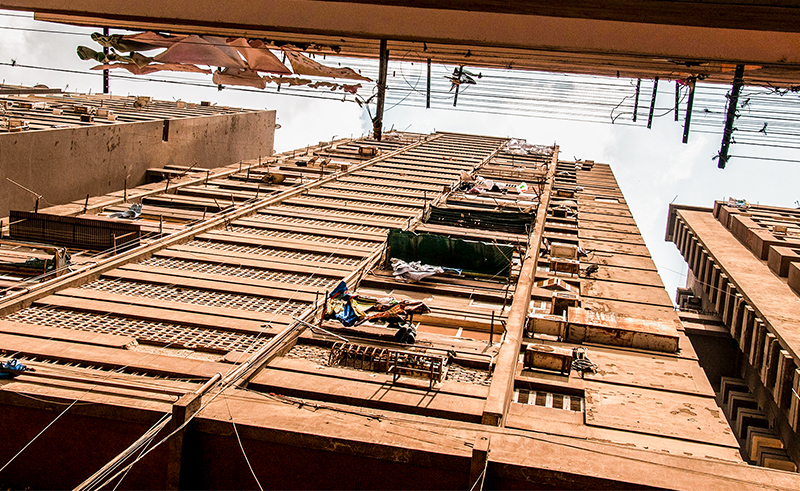
I believe in walking through the city, getting lost, and discovering moments organically. It’s in these moments of detachment, when I feel disconnected from my own history, that I learn the most about myself and the human condition. This disconnection is key to my process. I seek unfamiliar spaces, where I can explore new perspectives.
Many of the moments I capture have untold stories behind them - stories that don’t always make it into the frame. I photograph what catches my eye, like the brutalist buildings of Shubra Al Khaymah by the Corniche, surrounded by the raw life of local markets and workshops. While I focus on architecture, every photo holds a deeper layer of human life, even if it’s not shown directly.
How do you view the relationship between architecture, landscape, and urbanisation in Cairo, and what role does sustainability play in this dynamic?
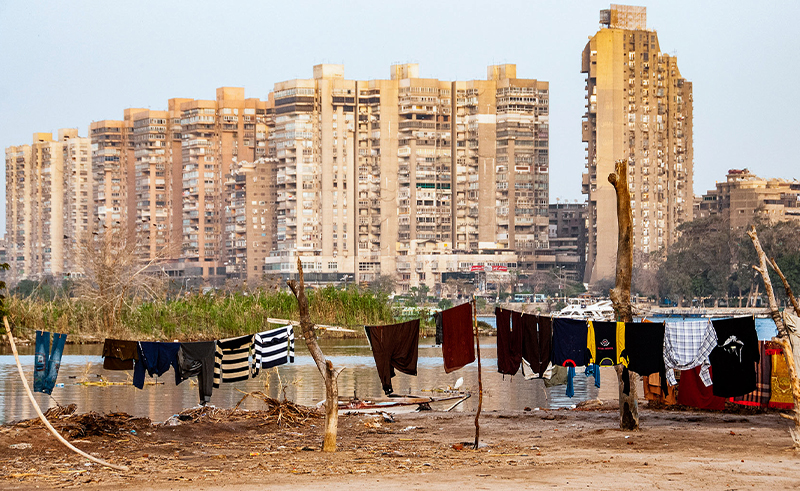
My photography isn't purely architectural. It explores the tension between what we build and the land, especially in a place like Cairo.
The city has always been a battleground between the natural landscape, particularly the desert, and the human drive for urbanisation. You see this in how the desert is slowly conquered for new developments like New Cairo, and how human progress through construction impacts the landscape.
At the end of the day, we tend to "win" in the sense that we shape the land to fit our needs, but it's a constant struggle between the natural and the built environment. There’s a delicate balance - while we construct and shape these spaces, we also face the consequences of our actions, like the occasional natural disasters that challenge our urban growth.
You mentioned ‘feeling displaced’. Do you often encounter or even seek out this sense of displacement in your work or travels? How does it shape your perspective as an observer and photographer?
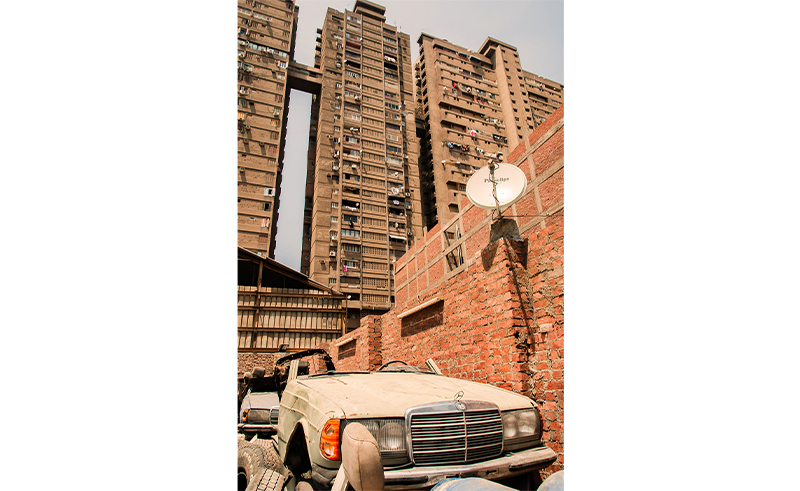
All the time. In fact, I feel most at home when I’m displaced. My life revolves around travel - I’ve lived in so many places: China, Japan, Iran, South Africa, Lebanon, France, the US, the UK, Algeria. I’ve travelled extensively across the world, and in that movement, I’ve found a sense of connection in disconnection.
There’s something deeply human about feeling fragile in displacement. It’s in those moments of disconnection from familiarity that I feel more alive and observant, more open to understanding the world around me. When you’re not rooted, you see everything anew - and that makes you notice the nuances of a place more vividly.
We are colonising landscapes, but in doing so, we expose both their fragility and our own. That clash fascinates me and drives my work - it’s a constant reminder of our vulnerability.
GOING BACK HOME
Would you say that your sense of displacement directly influences the depth or quality of your photography? How does being emotionally charged or situated in unfamiliar spaces impact your creative process?
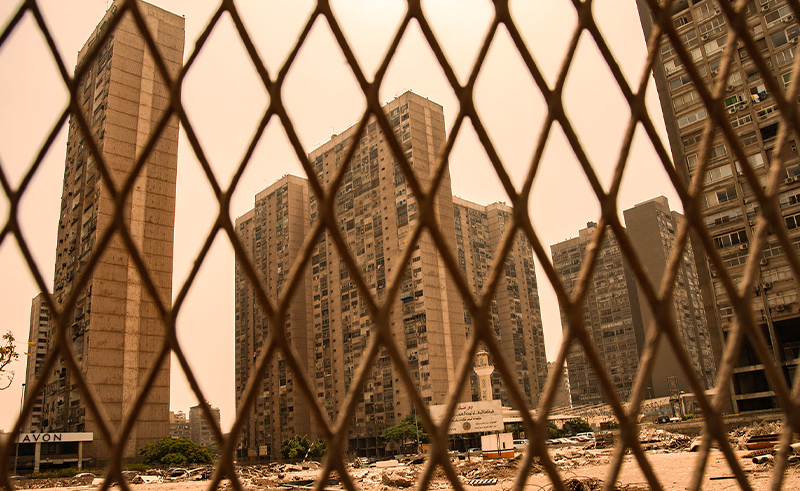
Displacement fuels my work. It’s woven into my photography, especially when I explore the margins of urban spaces. Cities, like people, go through cycles - born, mature, fade. They mirror our own fragility, especially in these liminal spaces, where ancient monuments like the Giza pyramids coexist with everyday elements like electric posts.
Through my photos, I want viewers to see not just landscapes or architecture, but reflections of their own humanity. Whether standing in 43-degree heat on Moqattam or wandering through the city, I’m compelled to question my place, and in that discomfort, I find meaning. These moments of displacement help me craft a narrative that connects people to themselves, wherever they are.
Do you ever miss home?
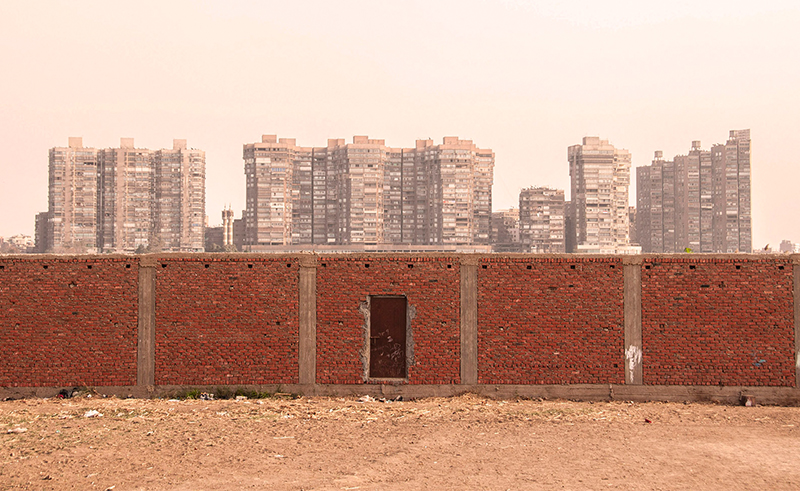
You know, nobody’s ever asked me this, but sometimes I close my eyes and imagine unlocking the doors to all the places I’ve lived, stepping inside, and feeling the lives I had there. I miss the relationships - the friends, the partners - and the local cultures of each city. To me, home isn’t about going back to where you were born. It’s all the places where I had extraordinary experiences, where I met incredible people, and where I was happy.
I’m a citizen of the world - a geographical accident, really. I was born in Spain, but I could just as easily have been born in Cairo, or anywhere else. Home, for me, is everywhere I’ve lived, and nowhere at the same time.
Photography Credit: Manuel Alvarez
- Previous Article Emirati Innovator Designs AI Programme to Represent UAE’s Culture
- Next Article Zooba: The Ingredients That Shaped Egypt's Best Restaurant
Related Articles
Trending This Week
SceneNow TV
Events Calendar



